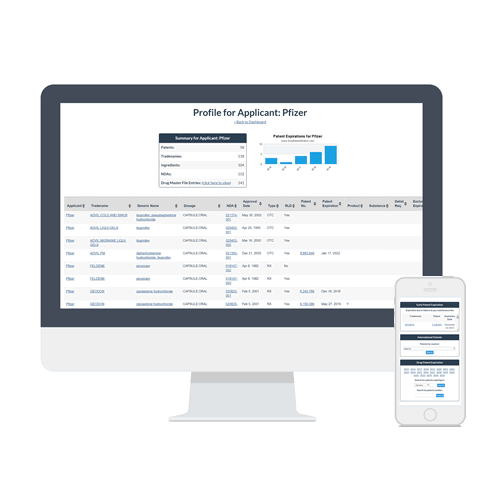
When it comes to patent searches, especially in the pharmaceutical industry, accuracy and comprehensiveness are crucial. While Google Patents is a popular tool due to its accessibility and user-friendly interface, it may not be the best resource for finding drug patents. Let’s explore why.
Table of Contents
1. Limited Database Coverage
Google Patents primarily sources its data from the United States Patent and Trademark Office (USPTO) and the European Patent Office (EPO). However, it may not include patents from other significant jurisdictions like Japan, China, or India, which are crucial for a comprehensive patent search in the global pharmaceutical market.
2. Incomplete Data Sets
The data in Google Patents can sometimes be incomplete or outdated. This is particularly concerning for drug patents, where even a small oversight can lead to significant legal and financial consequences. Missing information can include critical details such as patent family data, legal status updates, or citations that are vital for thorough patent analysis.
3. Search Algorithm Limitations
Google Patents uses a keyword-based search algorithm that might not effectively capture the nuances of complex pharmaceutical terminology. This can lead to irrelevant results or missed patents that do not explicitly mention certain keywords but are still related due to technical specifications or chemical compositions.
4. Lack of Advanced Search Features
Unlike specialized patent databases, Google Patents lacks advanced search features such as chemical structure searches or sequence searching, which are essential for identifying drug patents. These tools allow researchers to find patents based on molecular structures rather than just text descriptions.
5. No Proprietary Analysis Tools
Specialized patent databases often offer proprietary analysis tools that help users visualize patent landscapes, track competitors, and identify potential licensing opportunities. Google Patents does not provide these analytical capabilities, limiting its utility for strategic decision-making in drug development.
6. Potential for Inaccurate Results
There have been reports of inaccuracies in the search results provided by Google Patents. These inaccuracies can stem from errors in data entry or issues with the search algorithm itself. For industries like pharmaceuticals, where precision is paramount, relying on potentially flawed data can be risky.
7. Absence of Legal Status Information
Understanding the legal status of a patent is crucial for determining its enforceability and potential expiration dates. Google Patents often lacks up-to-date legal status information, which can lead to incorrect assumptions about a patent’s validity.
8. Inadequate Support for Non-English Patents
While Google Patents does offer some translation capabilities, they are not always reliable for complex technical documents such as drug patents. Misinterpretations due to translation errors can result in missed opportunities or misinformed decisions.
9. Limited Integration with Other Research Tools
Google Patents does not integrate seamlessly with other research tools and databases commonly used in the pharmaceutical industry. This lack of integration can hinder comprehensive research efforts that require cross-referencing multiple data sources.
10. No Alerts or Monitoring Features
For professionals who need to stay updated on new patent filings or changes in existing patents, Google Patents does not offer alert or monitoring features. This makes it challenging to keep track of developments in real-time without manually checking the database frequently.
11. Lack of Expert Support
Specialized patent databases often provide expert support services to help users navigate complex searches and interpret results accurately. Google Patents lacks this level of support, leaving users to rely on their own expertise or seek external assistance.
12. Challenges with Prior Art Searches
Conducting prior art searches is a critical step in assessing the novelty of a drug patent application. Google Patents might not provide comprehensive prior art coverage due to its limited database scope and search capabilities.
13. Absence of Comprehensive Citation Analysis
Citation analysis helps identify influential patents and assess their impact within the industry. Google Patents does not offer robust citation analysis tools, limiting its usefulness for strategic insights into patent influence and innovation trends.
14. User Interface Limitations
While user-friendly, the interface of Google Patents lacks customization options that allow users to tailor their search experience according to specific needs or preferences common in pharmaceutical research.
15. Privacy Concerns
Using free online tools like Google Patents raises privacy concerns regarding data usage and sharing practices. Professionals handling sensitive information may prefer more secure platforms that guarantee confidentiality.
Key Takeaways
- Google Patents offers accessibility but lacks comprehensive coverage needed for drug patents.
- Specialized databases provide advanced features essential for accurate pharmaceutical research.
- Limitations in data completeness and search capabilities make Google Patents less reliable for critical decisions.
FAQs
- What are some alternatives to Google Patents for drug searches?
- Consider using specialized databases like Derwent World Patents Index (DWPI) or SciFinder for comprehensive searches.
- Can I rely on Google Patents for preliminary research?
- While useful for initial exploration, it’s advisable to cross-reference findings with specialized databases for accuracy.
- How often is data updated on Google Patents?
- Updates vary; however, specialized databases typically offer more frequent updates with real-time legal status changes.
- Does Google Patents support chemical structure searching?
- No, it lacks advanced search features like chemical structure searching available in specialized tools.
- Are there privacy concerns with using free online patent databases?
- Yes, consider privacy policies and data security measures when using free online resources like Google Patents.
By understanding these limitations, business professionals can make informed decisions about where to conduct their patent research effectively and efficiently.


